By Peyton Bramble
During this unprecedented time of the COVID-19 pandemic, I was fortunate to have an in-person summer internship with Caring for Textiles. I am a senior at Shippensburg University in Pennsylvania, concentrating in Public History. This will be followed by the Master’s in Applied History program, focusing on Museum Studies.
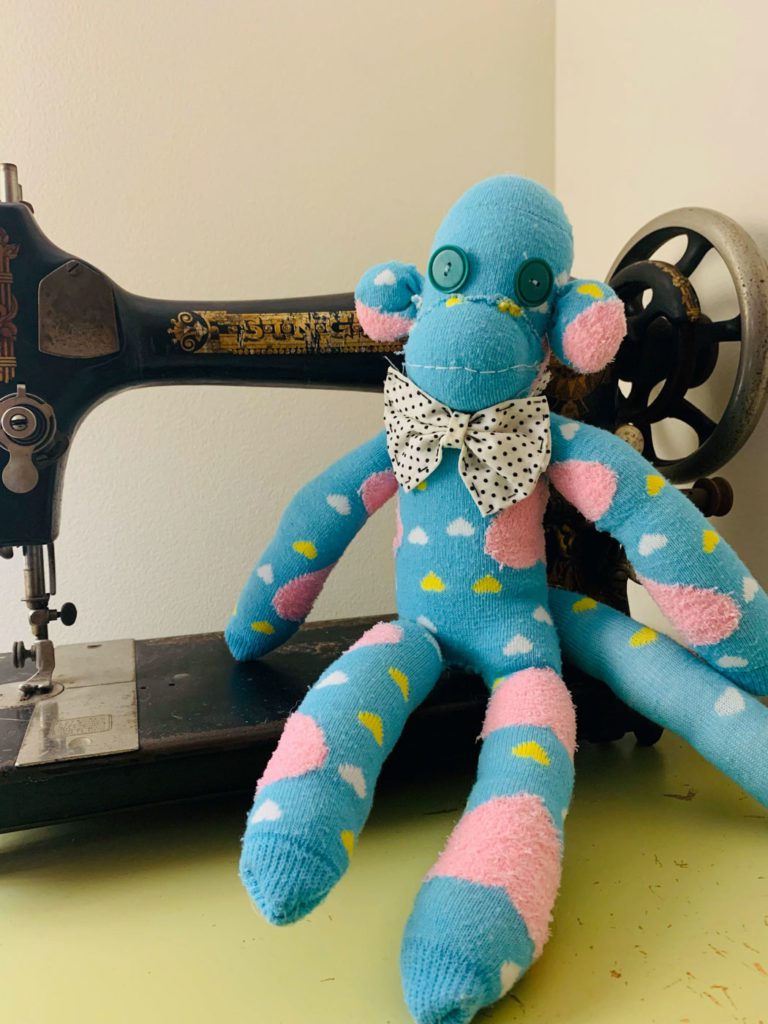
During Spring 2021, I worked at the Fashion Archives and Museum on campus with Dr. Karin Bohleke. Dr. Bohleke brought this summer internship to my attention and highly recommended I check it out. I could not be more grateful that she put me in contact with Caring for Textiles. I observed the volunteers at the Fashion Archive use conservation techniques for the collection, and I thought this summer internship would be a perfect way to deep dive into the world of textile conservation.
I was excited but nervous. Prior to this summer, the only hand stitching I’d done was in my eighth grade Family and Consumer Sciences class. My class experience was unusual because the sewing machines were unavailable due to a big school renovation. Instead of making machine-sewn pajama pants as all the previous eighth-graders did, my class had to make hand-sewn sock monkeys.
I remember being disappointed. I was looking forward to that project and instead of going to the fabric store to pick out cool fleece, I had to go to Walmart and pick a pair of socks. As I began my project, it grew on me. I liked working with my hands in this manner and I had more physical control over what I was creating. When I was finished, I had a cute monkey and a new skill set. I learned how to sew on a button, to do a backstitch, and a whip stitch. Prior to my time with Caring for Textiles, this cute little sock monkey amounted to the extent of my hand sewing abilities.
Before working on anything historical, I had to start off with a stitch sampler. It was important for me to learn the many unique stitches and stitch techniques used in textile conservation. I had to understand when and where each technique would be best served. My new favorite is the blanket stitch, which can sometimes be used to stabilize damaged and frayed edges of textiles. While I struggled with it at first, it was always one of those stitches that I would stare at and wonder how it worked. Having that lifelong question answered was a relief, to say the least.
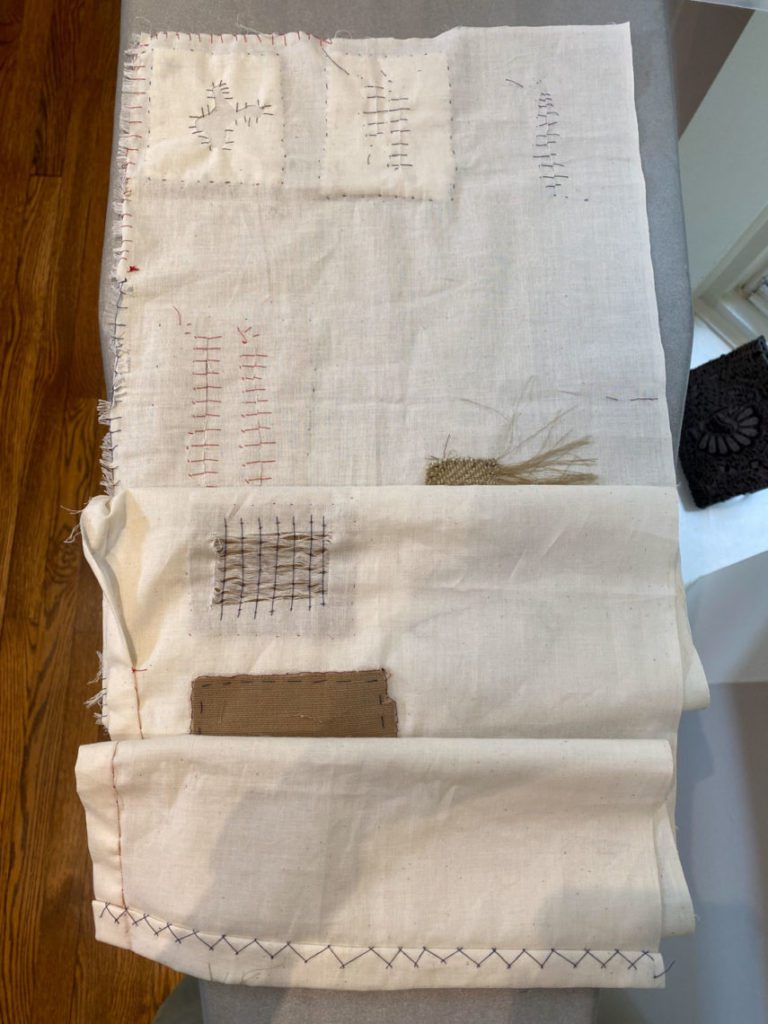
Before I knew it, I was using these very stitches and techniques to conserve a Civil War-era flag from Frederick, Maryland. One of my activities was picking out old nylon thread stitches used in the previous mounting from the 1960s or ’70s. I learned that not all threads are created equal, and these nylon ones were causing damage because of the stitch tension and the sharpness of the thread itself.
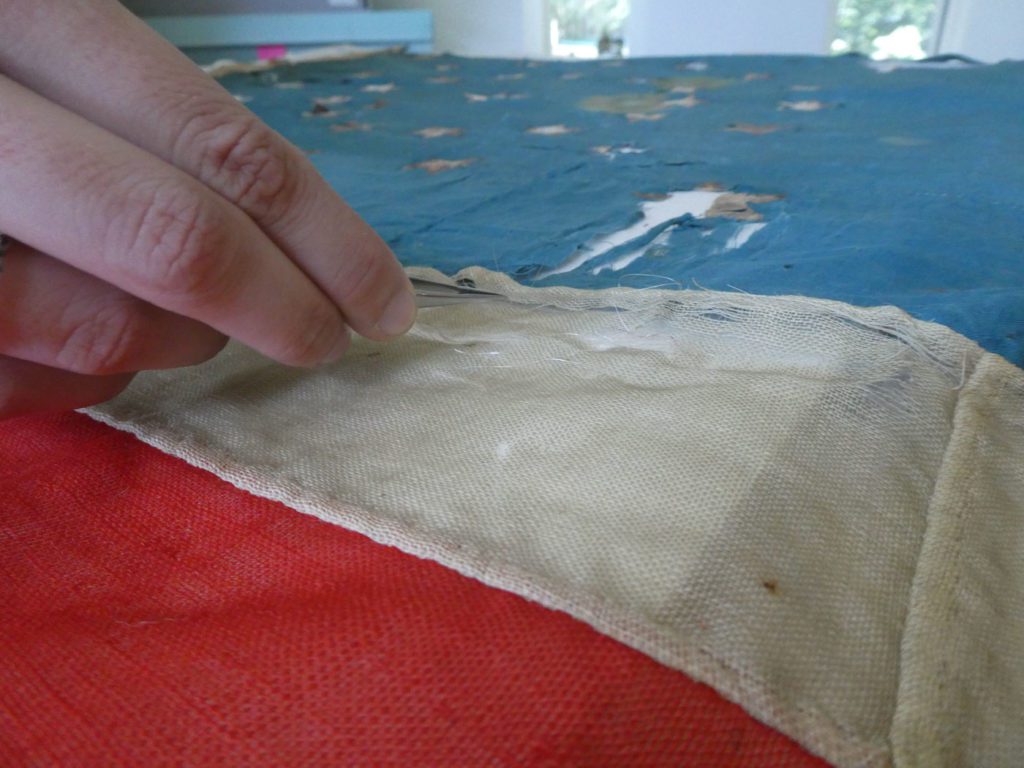
Once the old stitches were removed, the new stitch stabilization treatment will be done with very fine and nearly invisible thread. In this case, we are using a monofilament polyester thread made by Gutermann called Skala. Getting used to this kind of thread was a challenge at first but once I got the hang of it, I loved how it just disappeared into the textile.
After a month with Caring for Textiles, my hand stitching has far exceeded anything I could have imagined. I feel confident in my ability and proud of all I accomplished. The broad range of textiles I’ve been exposed to has kept me captivated all summer. I’m learning at least one thing new every day and I never have the same day twice. I could be tacking down an applique to a quilt and trying to blend my new stitches in with the old ones one day. The next, I could be doing a science experiment to try and get acidification out of a 300-year-old sampler from the 18th century. I never know what to expect, and that’s one of the best parts of it all. I am now not only a better stitcher but a better learner. I am able to make more thoughtful decisions about what to do where, and how it should look with my treatment. Getting to watch Julia and Kaitlyn work and learn from them has been invaluable. Their words of wisdom will carry with me for my future career, wherever that happens to lie.
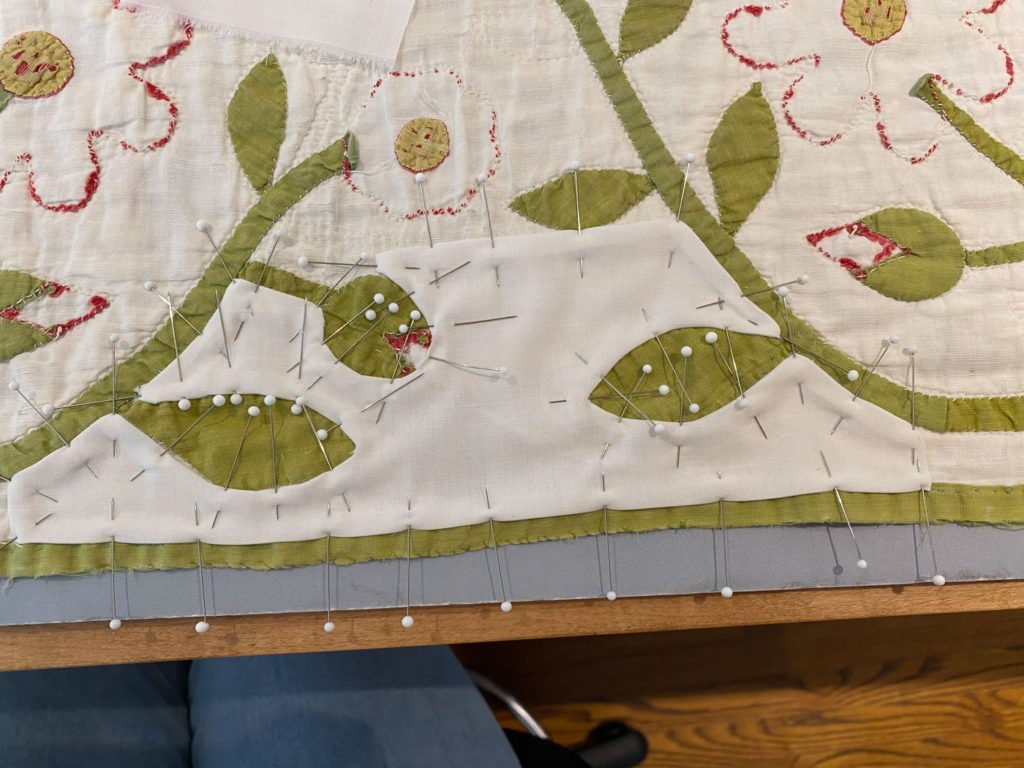
Quilt applique BEFORE 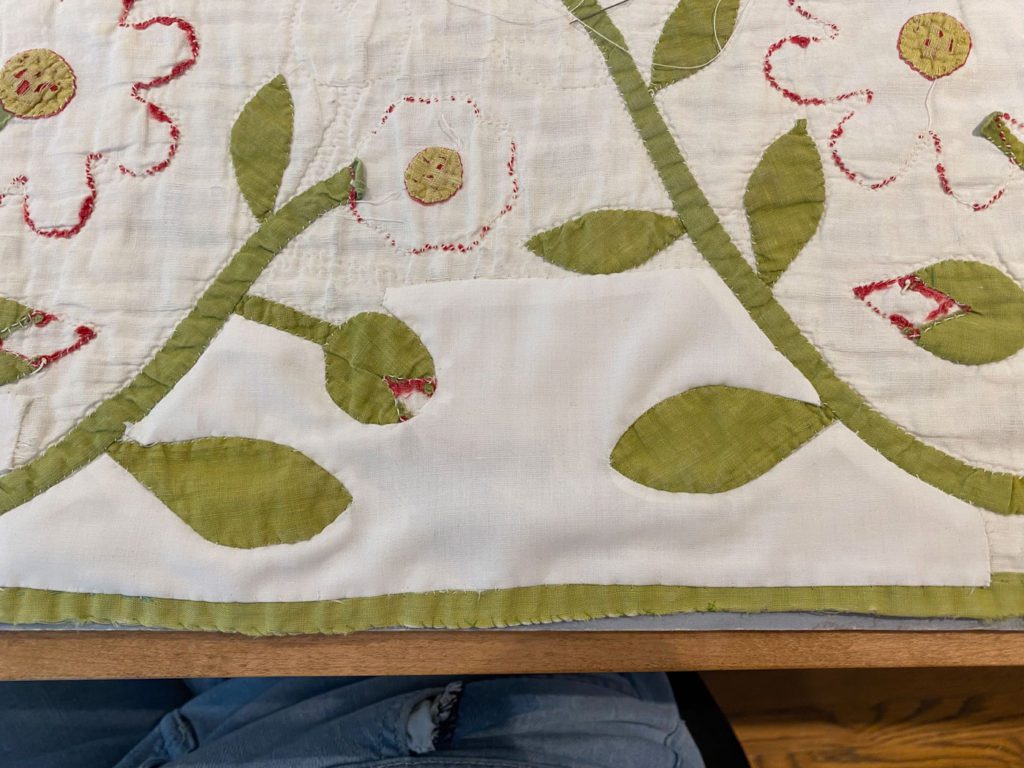
Quilt applique AFTER
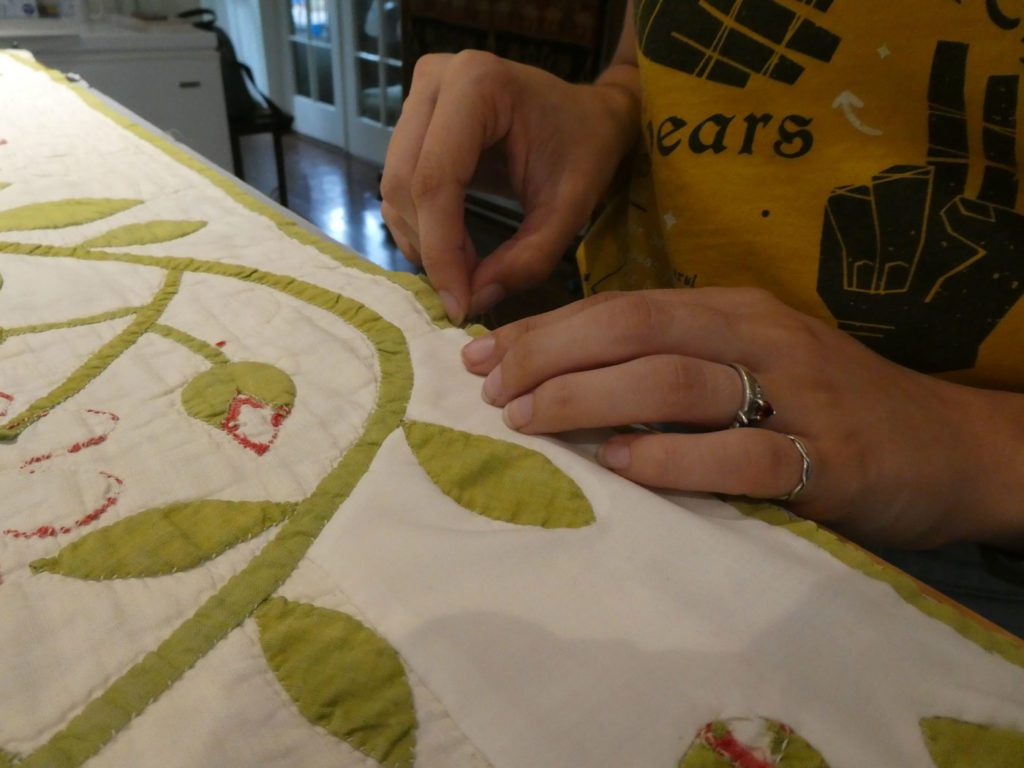
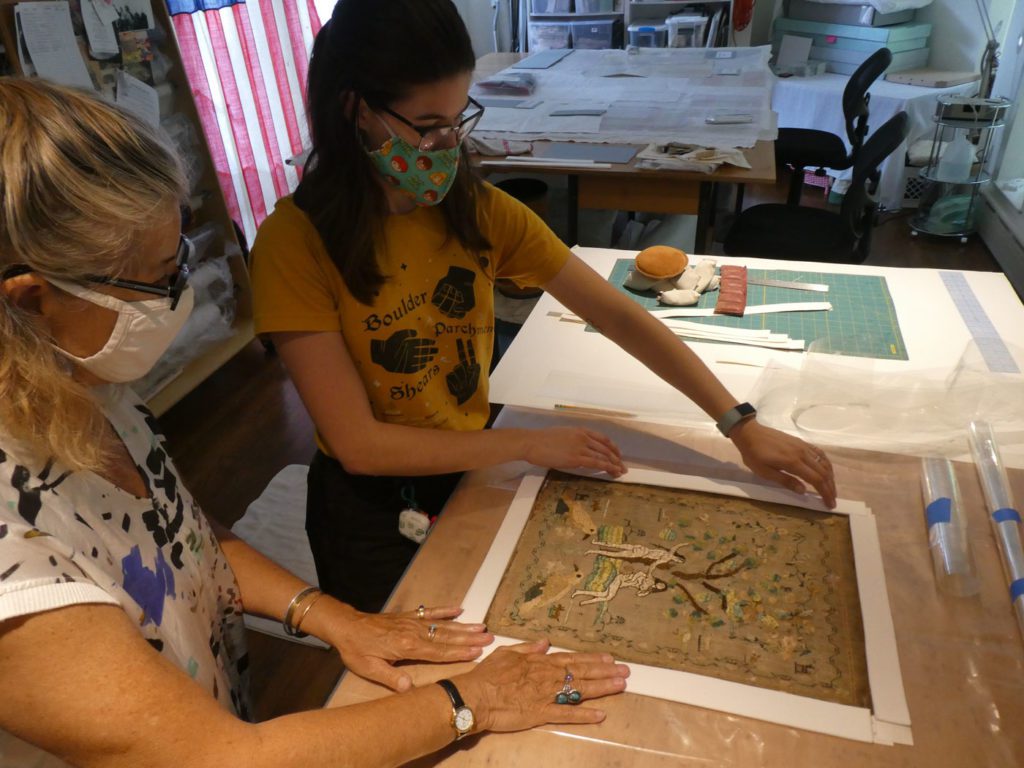
If you’re reading this and you have the opportunity to learn how to hand stitch, I encourage you to do so! Even if you’re not fixing an artifact older than you, just try something small—hey, maybe try a sock monkey! Soon you’ll be just like the women pre Elias Howe who invented the sewing machine in 1846.
Although the task may seem daunting, the joy and reward are worth it, I promise you. Don’t be intimidated by the art that is hand stitching. After all, when push comes to shove, it’s just a needle and some thread.
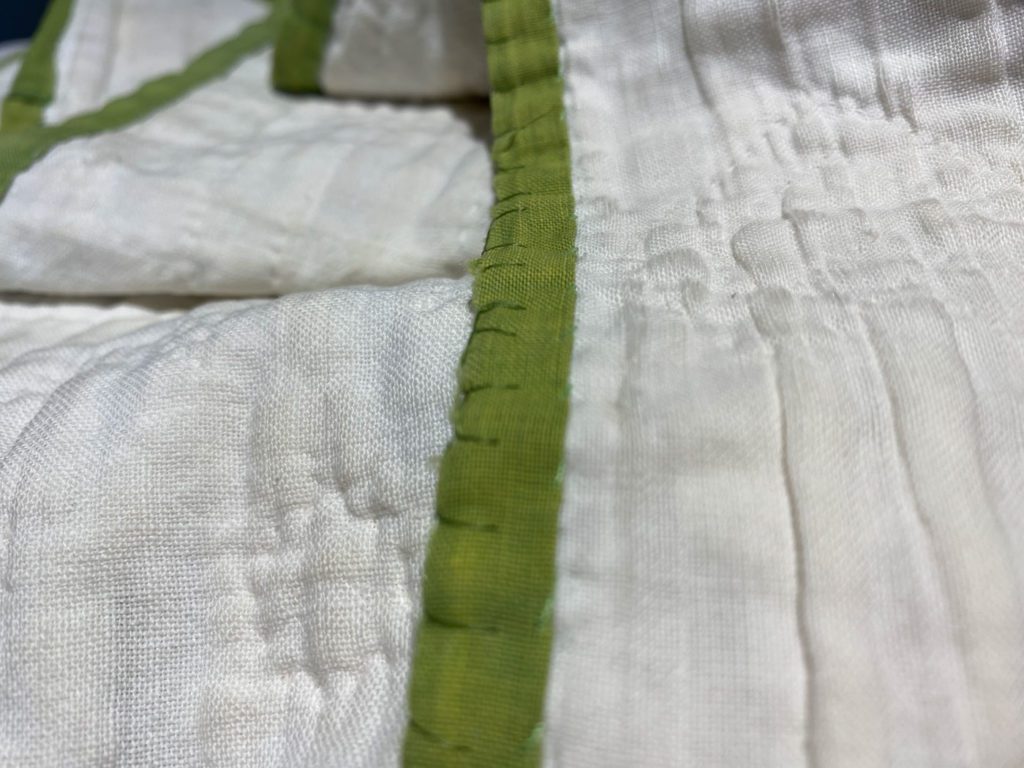
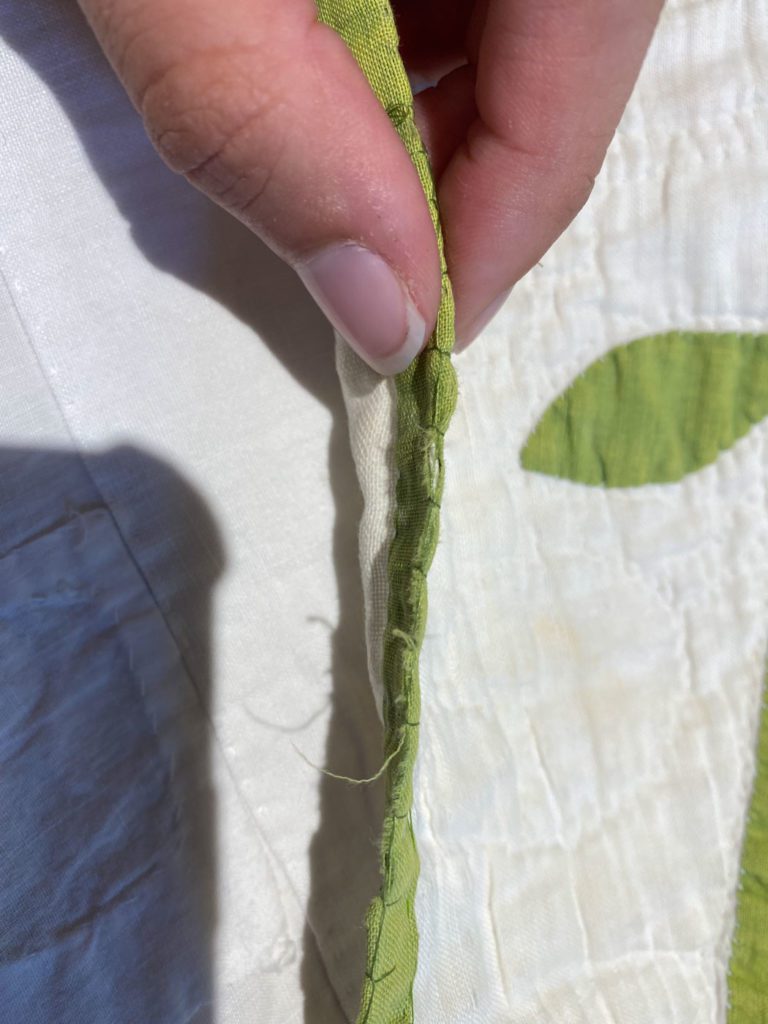
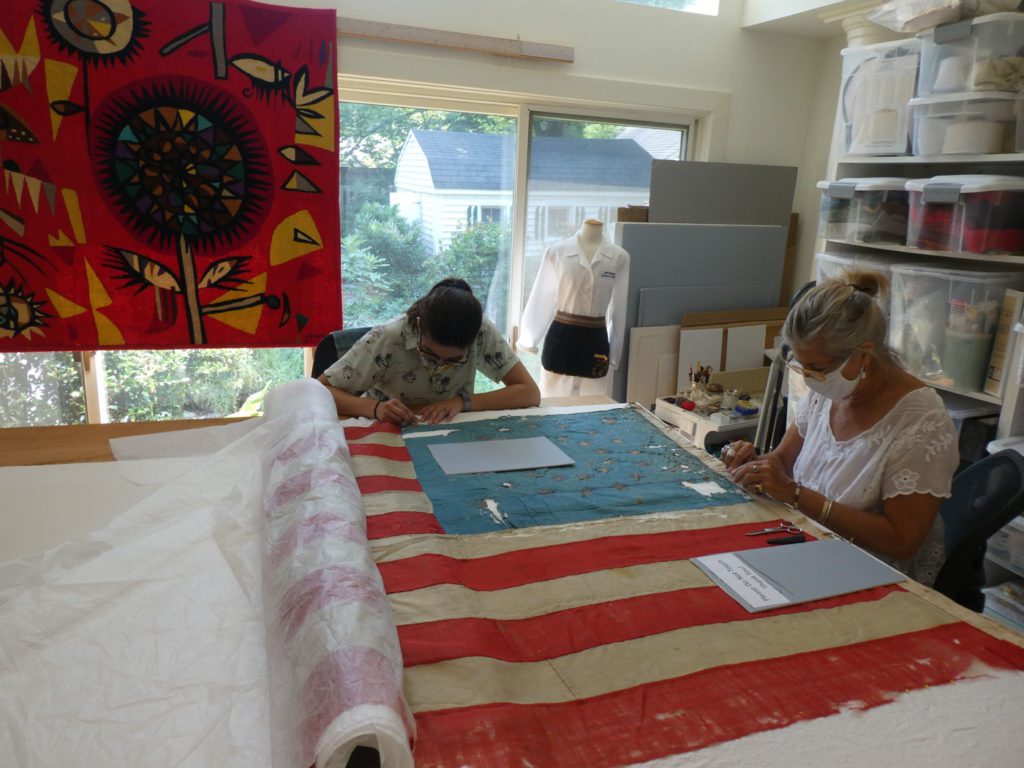
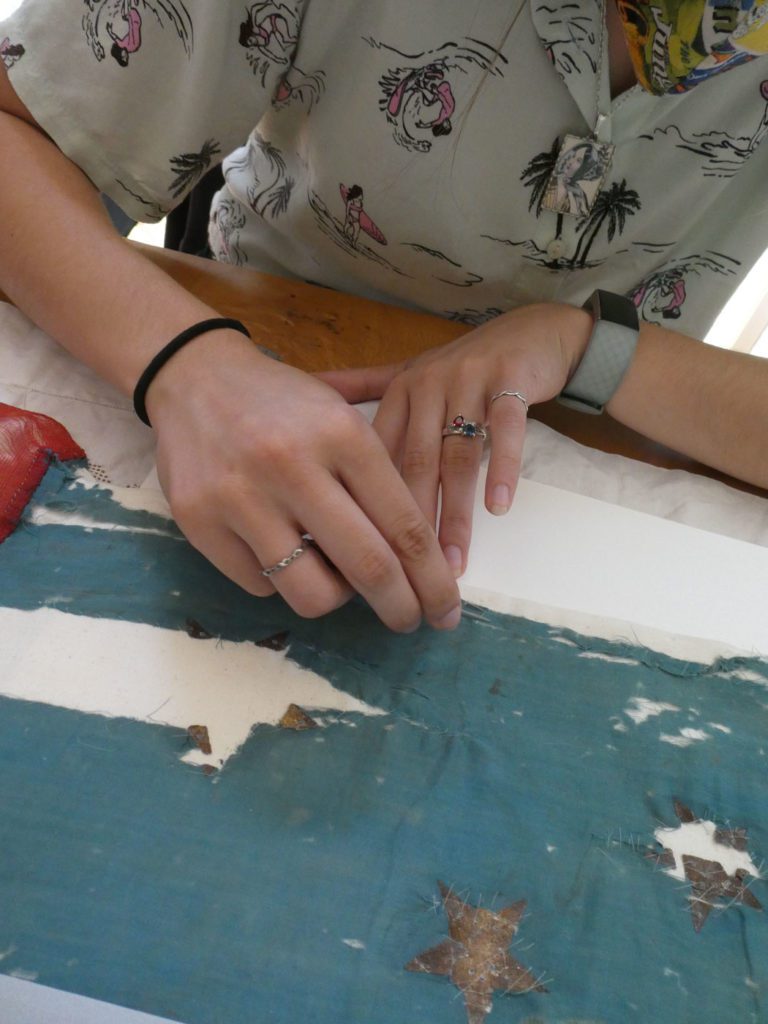

How nice to know something good is happening in thiis horrible time for many.
Dear Peyton,
What a lovely article! I think your words will be inspiring to all who read them! I’ve actually had a pair of the red/grey sock monkey socks stashed away for many years. I’ve just been afraid of actually cutting the pattern from them for fear of it unraveling. If you love sewing so much, have you ever considered crochet? It’s amazing what can be made from a strand of yarn. There are so many free patterns out there and if you haven’t crocheted, you can learn anything from YouTube.
Good luck to you in your future endeavors!
This is a wonderful read. It must have been delightful having Peyton in your studio this Summer eager and excited to learn.
Good luck in your process Peyton. You have a great attitude.
It’s nice to see a new generation value the handwork that we value. Peyton couldn’t have had a better teacher.
Thank you so much for bringing us with you on your interesting and inspiring insider’s journey.
Awesome work, Peyton! Thanks so much to Julia and her Caring for Textiles team for giving Peyton this AMAZING opportunity!
I am glad that you learned a love of stitching that will remain with you, and that you were able to use it to conserve textiles for the future! Great post!
Peyton has always amazed me, but this has topped it! Very very interesting work. Peyton, you are remarkable young lady and I can’t wait to see what you accomplish next.
You’ve given us a wonderful gift, Peyton! Thank you so much for writing up how you’ve gained experience over the years. I envy you! Thank you, CFT, for allowing Peyton to work with your team during this crazy time. Stitching is such a soothing way to do to carry on. Thank you all for providing such inspiration.
What a great account of all you accomplished and learned ! The Shippensburg University Fashion Archives and Museum has been very fortunate to have had you for the past two years. Having Dr. Karin Boeleke as your mentor has obviously been a serious part of your journey. As a longtime board member of the Fashion Archives it is heartwarming to see one of our own launching her career in this fascinating field
Thanks for sharing such a joyful learning experience with a simple needle and thread!